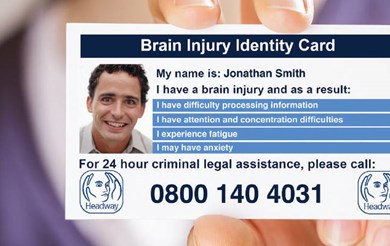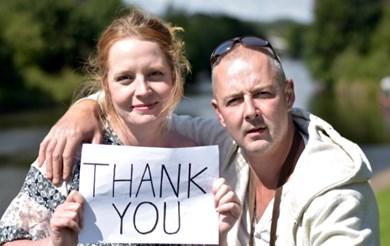We've put together 12 exercises that can help people who are struggling with balance problems and dizziness after brain injury, taken from our factsheet on the subject.
You should always seek professional advice if you are experiencing balance problems, and discuss with your doctor before trying any of the exercises.
Build and maintain strength, especially core strength
Core strength is very important for balance and can be built up with exercises that target the upper body and abdominal region. Press-ups, sit-ups, pull-ups and weight training are all very effective.
Build and maintain flexibility
Stretching exercises can help, as can activities such as yoga, Pilates, Tai Chi and ballet. Classes are widely available and you can also buy instructional books and DVDs.
Walking
This can be a good introduction back into activity or can be a useful exercise in itself.
Gym ball
These are very common in gyms and fairly cheap to buy. There are lots of exercises with gym balls which are excellent for balance and core strength.
Balance boards
These are small, round boards with a spherical base which require practice to be able to stand on without the sides touching the ground. They are widely used in sports rehabilitation and are excellent for improving balance.
Weight adjustment
Practice shifting your balance over your feet without moving your feet.
Standing on one leg
Try to steadily increase the time you can do this. Be very careful and make sure you have someone else there and/or something to lean on if you lose your balance.
Practise walking on different surfaces
This helps to train the body to adapt to different conditions.
Aqua aerobics
The buoyancy of water allows freedom of movement and is also more forgiving on the body than conventional aerobics. It can be very effective for improving balance when done on a regular basis.
Swimming
Can build all-round strength and fitness, which can help with balance, while also supporting the body.
Dancing
This can be a fun way of building fitness, strength and flexibility. There are many different kinds of dance (salsa is one popular example) and classes can be a great way of meeting people. Alternatively, there are dancing computer games or dancing movements that you can do at home.
Vestibular exercises
Vestibular rehabilitation (VR) – This is the main treatment for most types of balance problems. Vestibular rehabilitation helps the brain to minimise dizziness symptoms caused by imbalances between the vestibular organs of the inner ears.
The brain learns to rely more on the alternative signals from other parts of the balance system, such as joints and limbs. This process is known as ‘vestibular compensation’. VR involves a programme of head, eye, neck and body exercises under different visual situations (for example, with the eyes open or closed, or with background objects moving or stationary), on different surfaces and in different environments.
There are different types of VR exercises, for example Cawthorne-Cooksey exercises and gaze stabilisation exercises (details of these and other VR exercises can be found in the Brain and Spine Foundation factsheet Dizziness and balance problems – see ‘Further reading’).
The key feature of these programmes is that the brain has to sense dizziness and imbalance in order to learn to compensate and adjust. The brain must realise something is wrong in order to begin the process of vestibular compensation. Therefore, in order to make it work people may need to stop or reduce anti-vertigo medication.
A doctor must be consulted before doing this. People vary greatly in the nature of their balance and dizziness, so the more customised the programme is to each individual the more effective it will be.
Back









